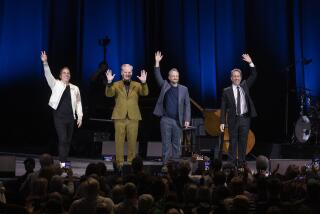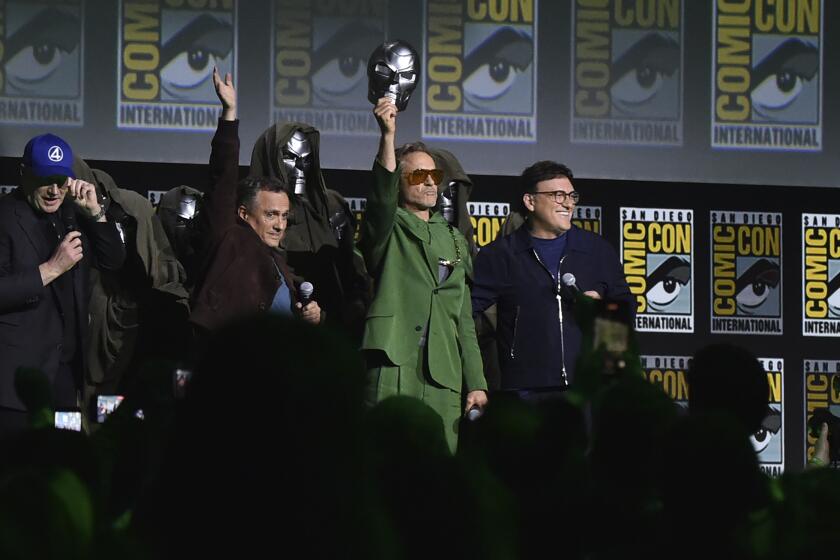Insight in mashing up the movies
- Share via
How often have you sat through a movie wishing you could talk back to the screen, reshuffle the ending or cut and paste your own dialogue to suggest what Indiana Jones is really thinking about the local Asian help? Have you ever perceived a riotous subtext lurking beneath the placid surface of some classic Hollywood narrative and wanted to leap out of your seat and regale your fellow viewers?
Well, imagine no more. The fantasy of being the Roland Barthes of the local shopping-mall cineplex will come to life tonight at REDCAT in an 8:30 encore presentation of “Cinema Cabaret.”
Co-curated by Jen Hofer and Konrad Steiner, the program, a version of which visited REDCAT in December 2007, allows poets and writers to visually edit and orally comment on -- or even mute the soundtrack and supply entirely new dialogue for -- live screenings of excerpted films.
Beyond the obvious potential for inventive spoofing, the resulting mash-ups are intended to dredge up previously unseen layers of political, aesthetic or psycho-cultural insight from big-screen stories that we may have thought we knew inside and out.
Among the films being chopped up and reassembled this evening will be “Who’s Afraid of Virginia Woolf?” “Guess Who’s Coming to Dinner,” “On the Beach” and Walt Disney’s “Fantasia.”
Seeing the shadings
Speaking by phone from the Bay Area, Steiner, a filmmaker, says the inspiration for “Cinema Cabaret” came from a performance he attended several years ago of a silent-film screening accompanied by a benshi, or Japanese live storytelling performer.
During the silent era, such performers would translate and read aloud the intertitles of imported foreign films, similar to the way that organists would provide live musical accompaniment. Sometimes, the performers would discover new poetic and metaphorical shadings in a film’s “dialogue” or imagery.
That led Steiner to propose to some of his writer friends that they try their hand at creating “neo-benshi.” They would supply the alternative soundtracks, and he would help out with the editing. “We’re all in the mix of mash-ups and sampling,” Steiner says. “That’s just part of our culture now.”
Steiner has done four mash-ups, including one of “Virginia Woolf” that finds an overlap between George Segal’s persistent cradling of Sandy Dennis’ fur wrap and Linus’ coddling of his security blanket in the contemporaneous comic strip “Peanuts.”
‘The between-space’
Other “Cinema Cabaret” contributors have similarly flirted with, and laid bare, the boundaries between an auteur’s conscious and unconscious intentions, and an audience’s overt and covert expectations.
In one, a mash-up of the apocalyptic “Night on Bald Mountain” segment of “Fantasia,” becomes a commentary on the 1992 Los Angeles riots triggered by the Rodney King police-beating jury decision.
In another, Douglas Kearney and Nicole McJamerson sampled “Indiana Jones and the Temple of Doom” to construct what Steiner describes as “an infomercial about hiring minorities to do your dirty work.”
Hofer, who teaches at California Institute of the Arts and also works as a court translator, will be presenting a subversive reading of the atomic age horror drama “On the Beach,” in which she interrogates the theme of what we eat, breathe, drink and otherwise ingest, including government and military propaganda.
“We all rewrite movies while we watch them,” Hofer says. “The interesting work happens in the between-space. I don’t want to be handed the meaning.”
--
More to Read
Only good movies
Get the Indie Focus newsletter, Mark Olsen's weekly guide to the world of cinema.
You may occasionally receive promotional content from the Los Angeles Times.











